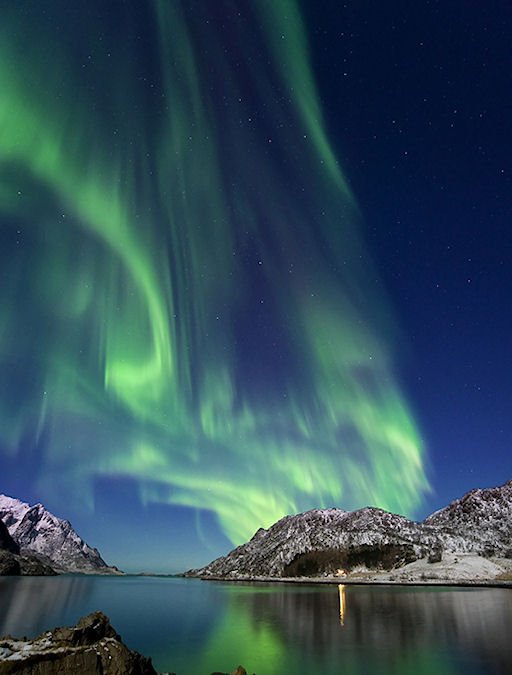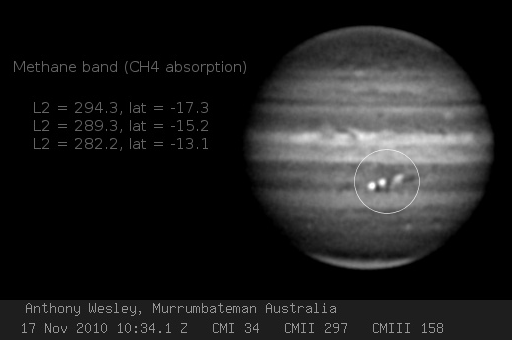AURORA ALERTS: Did you miss the Northern Lights? Next time get a wake-up call from Space Weather PHONE | | |
ALIEN COMETS IN THE SOLAR SYSTEM: Some of the comets in our Solar System probably came from other stars, according to new research by NASA-supported scientists. Studying these 'alien' comets, they say, could reveal new information about stellar systems far, far away. Get the full story from Science@NASA.
SPECTACULAR AURORAS: A solar wind stream hit Earth's magnetic field on Nov. 23rd. The impact was not strong, but it didn't need to be to produce strong auroras over northern Norway:

"The sky was brightly lit by the full Moon," says photographer Øystein Lunde Ingvaldsen of Bø in Vesterålen. "But the auroras were bright, too. They could easily be seen dancing through the veil of moonlight."
The solar wind is subsiding now, and the display is subsiding with it. Another stream is en route, however, due to arrive on or about Nov. 28th. Until then, browse the gallery for last night's action:
UPDATED: November 2010 Aurora Gallery
[previous Novembers: 2009, 2008, 2007, 2006, 2004, 2003, 2002, 2001, 2000]
PLUMES ON JUPITER: Astronomers are monitoring a cluster of energetic plumes breaking through the cloudtops of Jupiter. Regard the image below. Each of the bright spots is a massive convection cell rising high above the usual cloud deck:

Australian astrophotographer Anthony Wesley took the picture on Nov. 17th using a 16-inch telescope and a 890 nm "methane band" filter. Jupiter's atmosphere is permeated with methane, CH4, a strong absorber of sunlight at 890 nm. That's why the giant planet looks so dark in Wesley's image. The only things bright in the methane band are high-rising hazes and plumes that reflect sunlight before it enters the planet's methane-dark interior.
"When a transient convective plume becomes methane-bright, it means that it is extending exceptionally high above the normal cloud-tops," explains John H. Rogers, director of the British Astronomical Association's Jupiter Section. "What we see on Jupiter now is an exceptionally energetic weather system. It resembles (and may actually be) a gigantic thunderstorm."
If planetary scientists are correct, these plumes are heralds of a much bigger event--the return of Jupiter's South Equatorial Belt, which mysteriously disappeared almost a year ago. The missing belt could be hiding beneath a layer of high clouds. If so, these plumes, "and more turbulence and vortices generated from them, will spread around the planet over the coming weeks and months, breaking up the thick bright clouds to restore the dark belt as they go," predicts Rogers.
Potentially Hazardous Asteroids (
PHAs) are space rocks larger than approximately 100m that can come closer to Earth than 0.05 AU. None of the known PHAs is on a collision course with our planet, although astronomers are finding
new ones all the time.
On November 24, 2010 there were 1164 potentially hazardous asteroids.
Notes: LD means "Lunar Distance." 1 LD = 384,401 km, the distance between Earth and the Moon. 1 LD also equals 0.00256 AU. MAG is the visual magnitude of the asteroid on the date of closest approach. | | The official U.S. government space weather bureau |
| | The first place to look for information about sundogs, pillars, rainbows and related phenomena. |
| | Researchers call it a "Hubble for the sun." SDO is the most advanced solar observatory ever. |
| | 3D views of the sun from NASA's Solar and Terrestrial Relations Observatory |
| | Realtime and archival images of the Sun from SOHO. |
| | from the NOAA Space Environment Center |
| | the underlying science of space weather |

